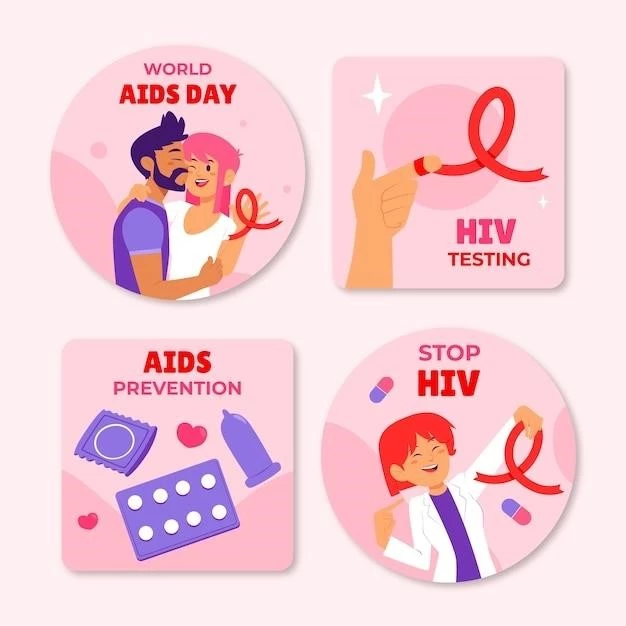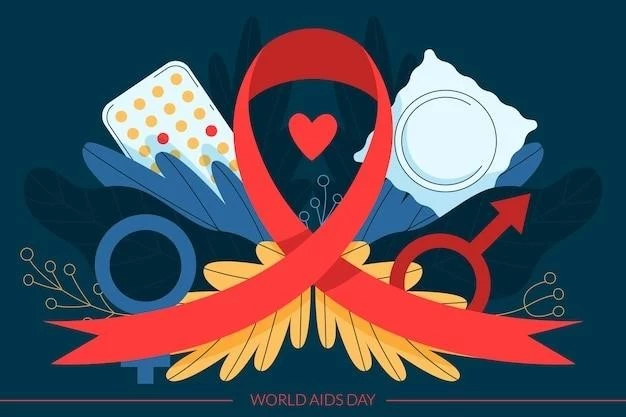Disease ‒ HIV
HIV, short for Human Immunodeficiency Virus, is a virus that attacks the immune system, leading to serious health issues. This article will delve into the transmission, symptoms, diagnosis, treatment, and prevention of this illness.
I. Introduction
HIV, or Human Immunodeficiency Virus, is a major global health issue affecting millions worldwide. This virus attacks the body’s immune system, specifically CD4 cells (T cells), which are crucial in fighting infections. When left untreated, HIV can lead to the disease AIDS (Acquired Immunodeficiency Syndrome), a condition in which the immune system is severely damaged.
HIV is primarily transmitted through unprotected sexual intercourse, sharing needles, and from mother to child during childbirth or breastfeeding. Understanding how HIV spreads is vital in preventing new infections. Early detection and treatment can significantly improve the quality of life for individuals living with HIV. Education about HIV/AIDS is essential in combating stigma and discrimination associated with the virus.
This article will explore the various aspects of HIV, including its transmission, symptoms, diagnosis, treatment options, and prevention strategies. By raising awareness and understanding about HIV, we can work towards a world where this virus no longer poses a threat to public health.

II. Transmission
HIV is primarily transmitted through specific bodily fluids such as blood, semen, vaginal fluids, rectal fluids, and breast milk. The most common modes of transmission include⁚
- Unprotected sexual contact⁚ Engaging in unprotected vaginal, anal, or oral sex with an infected partner who has the virus increases the risk of HIV transmission.
- Sharing needles⁚ Injecting drugs using needles that have been used by someone with HIV can introduce the virus into your bloodstream.
- From mother to child⁚ HIV can be passed from an infected mother to her child during pregnancy, childbirth, or breastfeeding. However, with proper medical interventions, the risk of transmission from mother to child can be significantly reduced.
It’s important to note that HIV cannot be transmitted through casual contact such as hugging, kissing, sharing food or drinks, or through mosquito bites. Understanding how HIV is transmitted is crucial for implementing preventive measures to reduce the spread of the virus.
III. Symptoms
Early stages of HIV infection may present with flu-like symptoms, including fever, fatigue, sore throat, swollen lymph nodes, and rash. However, some individuals may not experience any symptoms at all during this initial stage. As the virus progresses and the immune system is compromised, more severe symptoms may develop.
Some common symptoms of advanced HIV infection and AIDS include⁚
- Prolonged swelling of the lymph nodes
- Recurrent fevers
- Night sweats
- Chronic diarrhea
- Rapid weight loss
- Neurological issues like memory loss and confusion
- Opportunistic infections such as tuberculosis, pneumonia, and fungal infections
- Certain cancers like Kaposi’s sarcoma
It is important to note that the progression of HIV varies from person to person, and not everyone will experience the same symptoms or at the same rate. Regular HIV testing is crucial, especially for individuals engaging in high-risk behaviors, to ensure early detection and timely intervention.
IV. Diagnosis
Diagnosing HIV involves specific tests to detect the presence of the virus in the body. The primary methods of diagnosing HIV include⁚
- Antibody Tests⁚ These tests look for antibodies that the body produces in response to the HIV infection. A positive result indicates exposure to the virus.
- Antigen Tests⁚ These tests detect specific proteins on the surface of the virus. They can identify HIV earlier than antibody tests.
- Nucleic Acid Tests⁚ Also known as viral load tests, these tests directly detect the HIV genetic material in the blood. They are used to confirm a diagnosis or monitor the viral load in individuals with HIV.
It is recommended to get tested for HIV regularly, especially if engaging in high-risk behaviors. Early diagnosis allows for timely medical intervention and treatment planning. Additionally, knowing one’s HIV status is essential in preventing the further spread of the virus to others.
Upon receiving a positive HIV diagnosis, it is crucial to seek medical care immediately. Healthcare providers can offer guidance on treatment options, monitoring the progression of the virus, and managing potential complications associated with HIV/AIDS. Counseling and support services are also available to help individuals cope with the emotional aspects of living with HIV.
V. Treatment
Effective treatment for HIV involves a combination of medications known as antiretroviral therapy (ART). ART works by suppressing the replication of the virus in the body, reducing the viral load, and maintaining the immune system’s health. The key components of HIV treatment include⁚
- Nucleoside Reverse Transcriptase Inhibitors (NRTIs)
- Non-Nucleoside Reverse Transcriptase Inhibitors (NNRTIs)
- Protease Inhibitors (PIs)
- Integrase Inhibitors
- Fusion Inhibitors
- Entry Inhibitors
Consistent use of ART can help individuals with HIV lead long and healthy lives. Adhering to medication schedules and attending regular medical appointments are crucial for the success of HIV treatment. Monitoring viral load and CD4 cell count helps healthcare providers assess the effectiveness of the treatment and make adjustments as needed.
Additionally, individuals receiving HIV treatment may benefit from lifestyle changes such as maintaining a healthy diet, regular exercise, avoiding tobacco and excessive alcohol consumption, and managing stress. Support from healthcare professionals and support groups can also aid in navigating the challenges of living with HIV.
It is important to remember that while ART can effectively manage HIV, it is not a cure. Research into developing a cure for HIV is ongoing, and advancements in medical science offer hope for a future without the burden of HIV/AIDS.
VI. Prevention
Preventing HIV transmission is vital in reducing the spread of the virus and safeguarding public health. Key strategies for preventing HIV include⁚
- Practice Safe Sex⁚ Consistently and correctly using condoms during sexual activity reduces the risk of HIV transmission.
- Get Tested⁚ Knowing your HIV status through regular testing can help prevent the spread of the virus. Early detection allows for timely interventions.
- Use Clean Needles⁚ Avoid sharing needles and syringes if injecting drugs, as this can introduce HIV into the bloodstream.
- Pre-Exposure Prophylaxis (PrEP)⁚ PrEP involves taking medication to prevent HIV before potential exposure, recommended for individuals at high risk of HIV.
- Post-Exposure Prophylaxis (PEP)⁚ PEP involves taking medication after potential exposure to HIV to reduce the risk of infection. It should be initiated as soon as possible after exposure.
- Prevent Mother-to-Child Transmission⁚ Pregnant women with HIV can reduce the risk of transmitting the virus to their baby through proper medical care and interventions during pregnancy, childbirth, and breastfeeding.
Education and awareness play a crucial role in HIV prevention. Promoting accurate information about HIV transmission, testing, and treatment helps combat stigma and discrimination associated with the virus. Support for individuals living with HIV is essential in fostering a safe and inclusive community.
By implementing comprehensive prevention strategies, promoting safe behaviors, and advocating for widespread access to testing and treatment, we can work towards a future free from the threat of HIV/AIDS.
